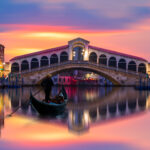Best Places to Visit in Jaipur
Introduction
Jaipur, the vibrant capital of Rajasthan, is a city steeped in history and rich in cultural heritage. Known as the Pink City, it boasts stunning palaces, majestic forts, and bustling markets, each offering a unique glimpse into its royal past. Whether you’re an architecture enthusiast, a history buff, or a lover of traditional arts and crafts, Jaipur has something to captivate every traveler. From the intricate designs of Hawa Mahal to the grandeur of Amer Fort, here are the best places to visit in Jaipur.
Hawa Mahal

Hawa Mahal, or the “Palace of Winds,” is one of Jaipur’s most iconic landmarks. Built in 1799 by Maharaja Sawai Pratap Singh, this stunning five-story palace is renowned for its unique architectural design and historical significance. Crafted from red and pink sandstone, it features 953 intricately carved small windows, known as ‘jharokhas,’ allowing royal ladies to observe street festivities without being seen.
The design of Hawa Mahal blends Rajput and Mughal architectural styles, with the façade resembling the crown of Lord Krishna. Inside, delicate latticework and ornate marble filigree showcase meticulous craftsmanship. Each floor offers a different experience, with narrow ramps providing access to the upper levels.
The palace’s unique window arrangement allows a gentle breeze to flow through, giving it its name – the Palace of Winds. The panoramic views from the top are breathtaking, offering splendid vistas of Jaipur and the City Palace.
Hawa Mahal stands as a testament to Jaipur’s rich history and culture, symbolizing the city’s royal heritage and artistic excellence. A visit to Hawa Mahal is a journey back in time, offering a glimpse into the elegance and grandeur of Jaipur’s past.
Jal Mahal
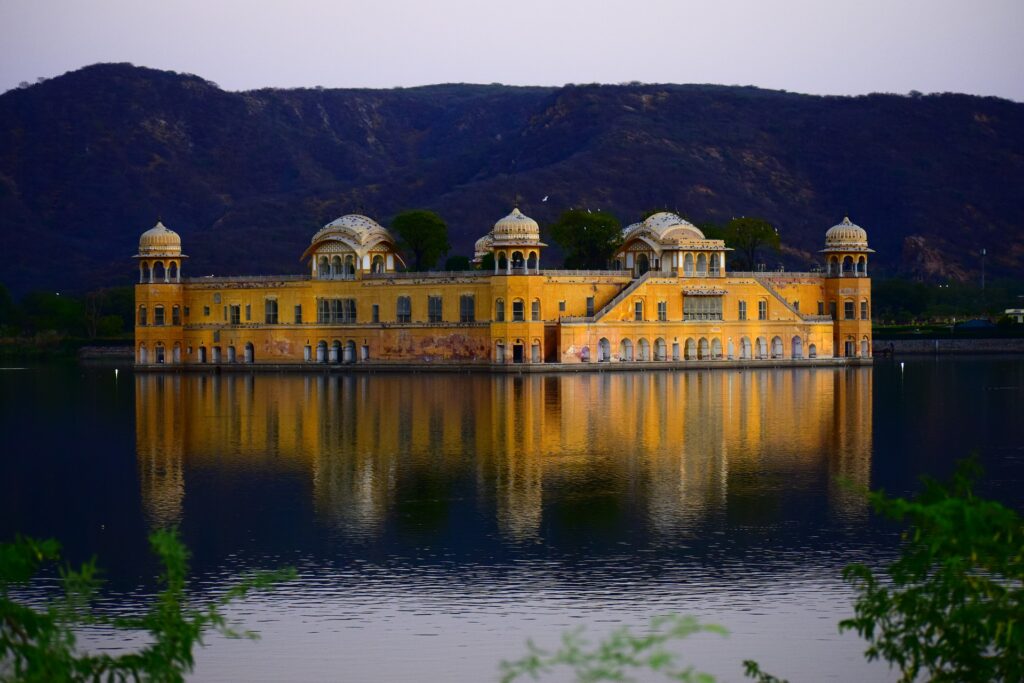
Nestled in the middle of Man Sagar Lake, Jal Mahal, or the “Water Palace,” is a serene and captivating sight in Jaipur. This five-story palace, with four floors submerged when the lake is full, combines Mughal and Rajput styles. Built in 1699 by Maharaja Madho Singh I for duck hunting, Jal Mahal has been beautifully restored to its former glory.
The palace’s reflection in the still waters creates a mesmerizing sight, especially at sunrise and sunset, with the Nahargarh hills adding to the scenic beauty. Though entry is restricted, boat rides on the lake offer close-up views. The terraced garden, featuring aromatic plants and attracting various bird species, adds to the charm.
While the interiors are inaccessible, the exterior beauty of Jal Mahal offers a glimpse into the luxurious lifestyle of the royals. The serene environment and breathtaking scenery make Jal Mahal a perfect escape from the city’s hustle and bustle, embodying the luxury and grandeur of Jaipur’s history.
Bhangarh Fort
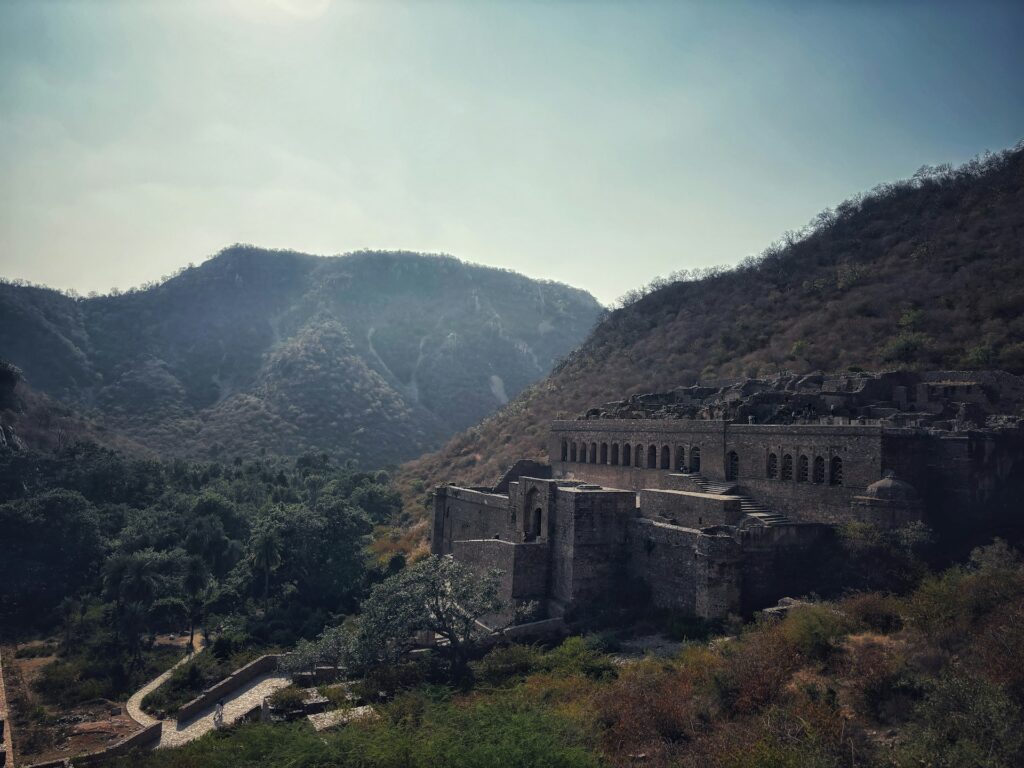
Bhangarh Fort, built in the 17th century by Raja Madho Singh, is a fascinating historical site in Rajasthan. Known for its legends and paranormal activity, it is a stunning example of medieval architecture set against the backdrop of the Aravalli hills. The fort complex, with remnants of grand palaces, temples, and havelis, offers a glimpse into its former grandeur. Legend has it that a wizard cursed the fort due to his love for a local princess, leading to its abandonment. Visitors often report strange experiences, and the Archaeological Survey of India has placed warning signs prohibiting entry after sunset. Despite the spooky tales, Bhangarh Fort is a treasure trove for history enthusiasts, with intricate carvings, gateways, and temples dedicated to Hindu deities.
Jantar Mantar
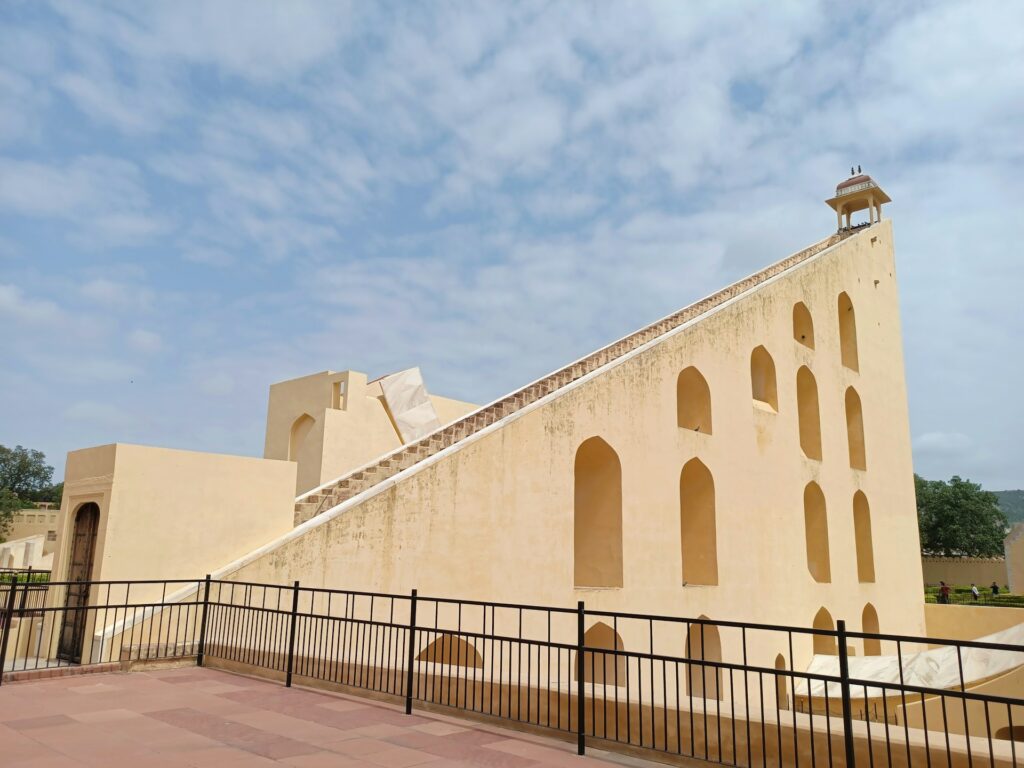
Jantar Mantar in Jaipur is a UNESCO World Heritage site that showcases the scientific and architectural brilliance of the 18th century. Built by Maharaja Sawai Jai Singh II, the founder of Jaipur, the observatory consists of nineteen astronomical instruments made of stone and brass. These instruments were designed to measure time, predict eclipses, and track celestial objects, reflecting ancient Indian astronomy’s advanced knowledge. The Samrat Yantra, the world’s largest stone sundial, stands at 27 meters and can measure time with an accuracy of up to two seconds. Other fascinating instruments include the Jai Prakash Yantra, which maps star positions, and the Ram Yantra, used for altitude measurement.
Jantar Mantar is not just a scientific marvel but also an architectural delight, with its harmonious blend of functionality and aesthetics demonstrating the ingenuity and artistic sensibilities of the period. The site also offers educational insights into ancient Indian astronomy and its significance in daily life, agriculture, and navigation. Guided tours provide detailed explanations of each instrument’s workings and historical context, making it a valuable learning experience for both adults and children.
Amer Fort
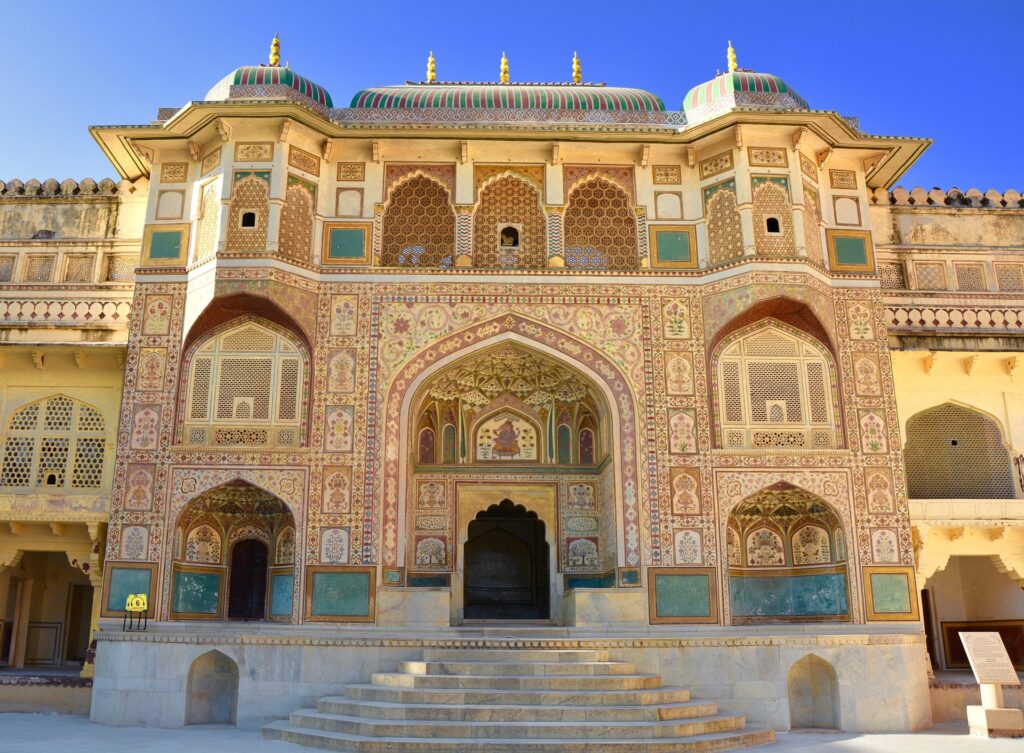
Amer Fort, also known as Amber Fort, is a magnificent Rajput architecture complex in Jaipur, built in 1592 by Raja Man Singh I. It features intricate carvings, ornate mirror work, and grandiose structures, making it a must-see attraction. Accessible through imposing gates like Suraj Pol and Ganesh Pol, the journey to the fort is a regal experience, often undertaken on foot, jeep, or elephant. The Sheesh Mahal, or Mirror Palace, is a captivating attraction, adorned with thousands of mirror tiles and colored glass. The Diwan-e-Aam, the Hall of Public Audience, showcases the craftsmanship of artisans with its latticework and large columns. The Diwan-e-Khas, the Hall of Private Audience, is equally impressive with frescoes and inlaid panels. The fort also houses the Sukh Niwas, a hall designed to remain cool in the summer, showcasing ancient climate control. The fort’s serene ambiance is enhanced by its sprawling courtyards, lush gardens, and tranquil temples. Amer Fort’s light and sound show in the evening narrates its rich history and legends, reflecting its historical significance as a military stronghold and royal residence.
The City Palace
The City Palace in Jaipur is a stunning architectural marvel that showcases Rajasthan’s royal heritage. Built by Maharaja Sawai Jai Singh II in the early 18th century, it features a blend of Rajput, Mughal, and European styles. The complex is home to a series of courtyards, gardens, and buildings, each with its own unique features. The Mubarak Mahal, or the Auspicious Palace, houses a museum showcasing royal costumes, textiles, and artifacts. The Chandra Mahal, a seven-story building, serves as the residence of the current royal family and showcases beautiful paintings, floral decorations, and mirror work.
The Diwan-e-Khas, or the Hall of Private Audience, is renowned for its two giant silver urns, listed in the Guinness Book of World Records as the world’s largest silver objects. These urns were used by Maharaja Sawai Madho Singh II to carry holy Ganges water on his journey to England. The Pritam Niwas Chowk, with its four beautifully decorated gates representing the four seasons, is another must-see. The Maharaja Sawai Man Singh II Museum also houses an extensive collection of artifacts, including weaponry, manuscripts, and carpets, offering a deep dive into Jaipur’s history and culture.
A visit to the City Palace is a journey through Jaipur’s royal past, showcasing the timeless beauty and grandeur of Rajasthan’s heritage.
Sisodia Rani Garden and Palace
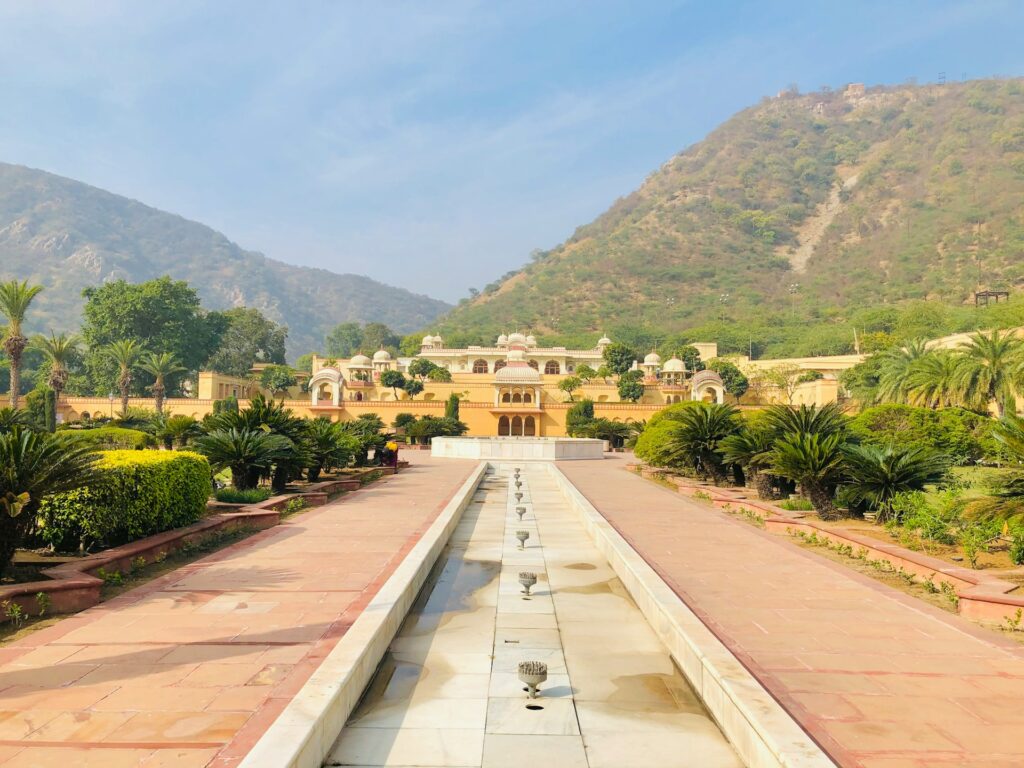
Sisodia Rani Garden and Palace, located in the serene Aravalli hills of Jaipur, is a blend of natural beauty and historical significance. Built in 1728 by Maharaja Sawai Jai Singh II for his second wife, Queen Sisodia, the garden is a symbol of love and devotion. The garden is laid out in the traditional Mughal style, featuring terraced lawns, cascading fountains, and beautifully landscaped flower beds. The palace, located at the heart of the garden, is an architectural gem with beautiful frescoes depicting scenes from Lord Krishna’s life, showcasing Rajasthan’s rich cultural heritage. The palace’s elegant arches, intricate carvings, and colorful murals reflect the artistic excellence of the period.
The garden features several charming pavilions and galleries, each offering a unique perspective of the surrounding landscape. The central pavilion, with its delicate latticework and ornamental arches, provides a stunning view of the entire garden. The Sisodia Rani Garden and Palace is not just a place of beauty but also a testament to the romantic and artistic sensibilities of Jaipur’s royalty.
Johri Bazar
Johri Bazar, one of Jaipur’s oldest and most famous markets, is a vibrant hub of activity and a paradise for shoppers. Established in the 18th century, the market has retained its old-world charm while evolving into a modern shopping destination. The market is best known for its exquisite jewelry, particularly traditional Kundan and Polki designs, which reflect the rich craftsmanship of Jaipur’s artisans. The market also offers a treasure trove of vibrant fabrics, including Bandhani (tie-dye) and block-printed textiles, with sarees, lehengas, and dress materials in a myriad of colors and patterns.
Handicrafts and souvenirs are another highlight of Johri Bazar, with intricately carved wooden items, colorful pottery, and puppets. These unique items make perfect gifts and mementos, capturing the essence of Jaipur’s rich cultural heritage. The narrow lanes of the market create a lively atmosphere, with the sounds of bargaining, vibrant colors of merchandise, and enticing aromas of local street food contributing to its sensory appeal. Visitors can also enjoy delicious local snacks like kachoris and jalebis.
Visiting Johri Bazar is not just about shopping; it offers an immersive cultural experience, offering a glimpse into the daily life of Jaipur, where tradition and modernity coexist harmoniously.
Nahargarh Fort
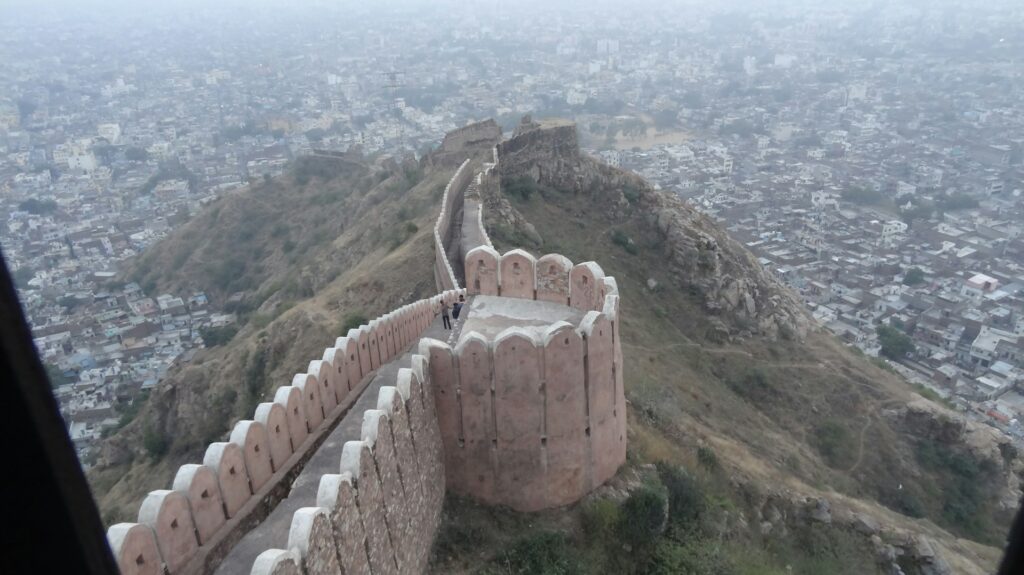
Nahargarh Fort, built in 1734 by Maharaja Sawai Jai Singh II, is a stunning retreat for the royal family in Rajasthan. Named after Nahar Singh Bhomia, the fort’s impressive structure reflects its military significance. Inside, the fort features beautiful palaces and intricate decorations that showcase the luxurious lifestyle of the royals. The Madhavendra Bhawan, a palace complex built by Sawai Madho Singh, is the most notable feature, featuring suites for the king and his queens adorned with frescoes and stucco work. The fort’s location offers breathtaking views of Jaipur, especially during sunset, and its majestic presence creates a mesmerizing experience. Visitors can enjoy the scenic beauty and delicious Rajasthani cuisine at the open-air restaurant, Padao. The fort’s location and architectural excellence make it a must-see for visitors to Rajasthan.
Nahargarh Fort also holds cultural significance, hosting various events and festivals throughout the year. The fort’s ambiance, combined with its historical and cultural richness, makes it a favorite destination for tourists and locals alike.
A visit to Nahargarh Fort is a journey into the heart of Rajasthan’s heritage. It offers a perfect blend of history, culture, and natural beauty, providing a unique and enriching experience for all who visit.
Rambagh Palace
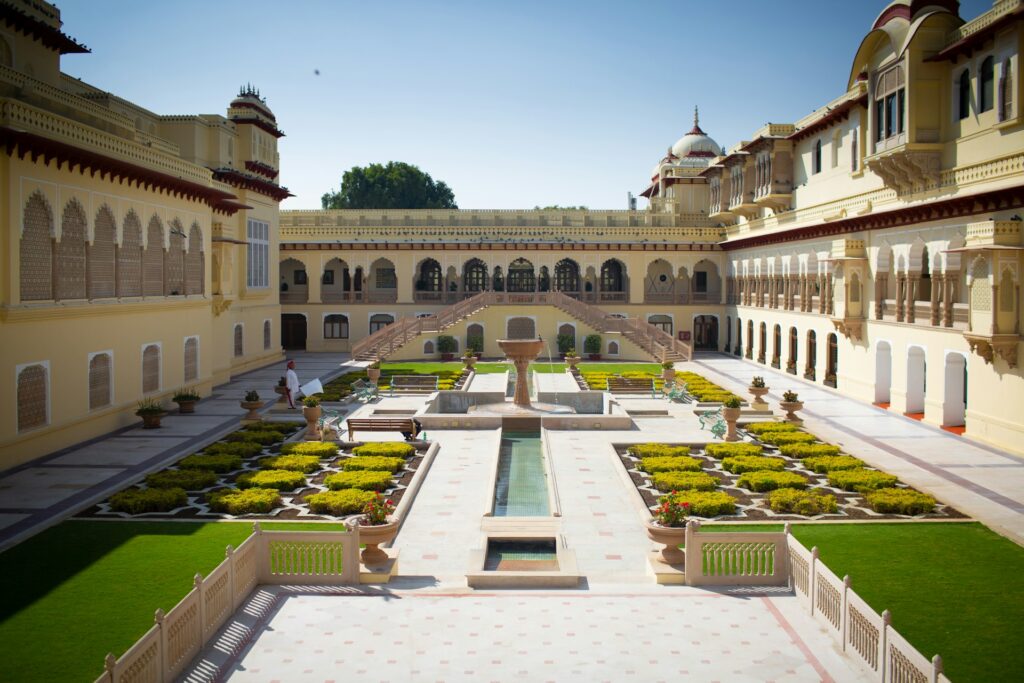
Rambagh Palace, once the Maharaja’s residence, is now a luxurious heritage hotel that embodies Rajasthan’s royal history. Built in 1835, the palace has evolved from a royal hunting lodge to a palace and finally a hotel, offering guests a taste of regal luxury. The palace’s architecture blends Rajput and Mughal styles, with grand domes, arched windows, and intricately carved pillars. Surrounded by lush gardens, the palace’s interiors are stunning with opulent decor, antique furniture, and exquisite artwork reflecting the royal heritage.
Rambagh Palace offers a variety of dining options, catering to diverse tastes, including traditional Rajasthani cuisine and international dishes. The Suvarna Mahal, with its grand dining hall and gourmet menu, is a highlight. The palace also features recreational facilities like a spa, swimming pool, and fitness center, as well as cultural performances and guided heritage walks.
Rambagh Palace is not just a hotel; it is a living testament to Jaipur’s royal legacy, offering an unparalleled blend of history, luxury, and hospitality. A stay at Rambagh Palace is a journey into a world of elegance and opulence, providing an unforgettable experience of royal living.
Chokhi Dhani Jaipur
Chokhi Dhani, a cultural village in Jaipur, is a popular destination for tourists seeking an authentic Rajasthani experience. Established in 1989, the village resembles a traditional hamlet with mud huts, thatched roofs, and colorful decor. Visitors are greeted warmly with folk music and dance performances, creating a festive atmosphere. Chokhi Dhani offers a variety of attractions and activities, including camel and elephant rides, traditional folk dances, puppet shows, and artisans demonstrating traditional crafts. One of the highlights is the authentic Rajasthani cuisine, served in a traditional setting. The village’s hospitality and warmth make the dining experience truly special.
In addition to cultural activities, Chokhi Dhani offers amenities like a swimming pool, spa, and traditional games. The village also hosts cultural events and festivals, providing visitors with an opportunity to experience Rajasthan’s vibrant traditions up close. Chokhi Dhani is more than just a tourist attraction; it is a celebration of Rajasthan’s rich cultural heritage, offering an immersive experience that allows visitors to relive the spirit of this heritage city.
The Albert Hall Museum
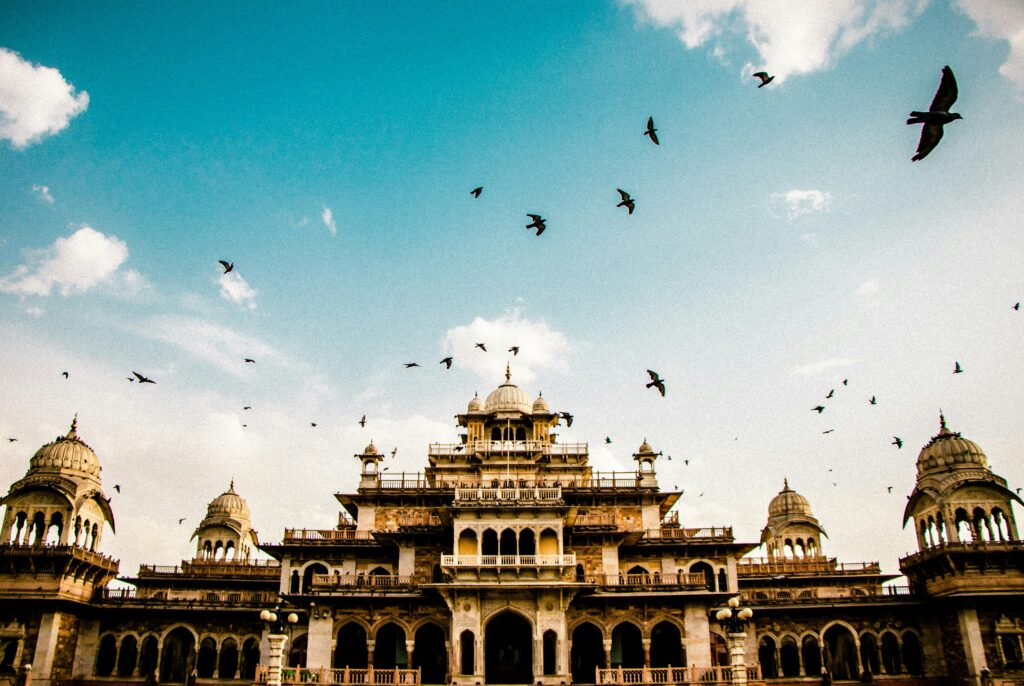
The Albert Hall Museum in Jaipur is a treasure trove of art and history, housed in an Indo-Saracenic building designed by Sir Samuel Swinton Jacob. The museum’s architecture, featuring intricate carvings, grand arches, and elegant domes, attracts visitors from around the world. Inside, visitors are greeted by a vast collection of artifacts, including ancient sculptures, miniature paintings, textiles, pottery, and musical instruments. The museum’s Egyptian mummies offer a fascinating glimpse into ancient Egyptian culture and burial practices. The museum also showcases traditional Rajasthani artwork, including marble carvings, frescoes, and exquisite metalwork, each telling a story about the region’s artistic and cultural evolution. The museum also features a section dedicated to arms and armor, showcasing the weaponry used by Rajput warriors. The museum also hosts temporary exhibitions and cultural events, providing visitors with a dynamic and engaging experience. The museum’s well-curated displays and informative descriptions make it a valuable educational resource for students, historians, and art enthusiasts. A visit to the Albert Hall Museum is a journey through time, where visitors can marvel at the artistic and cultural achievements of Rajasthan and beyond.




